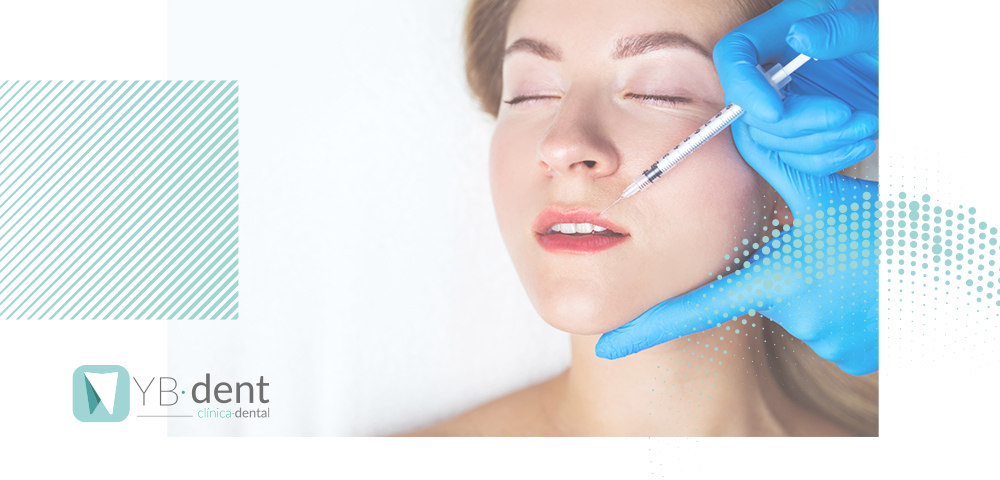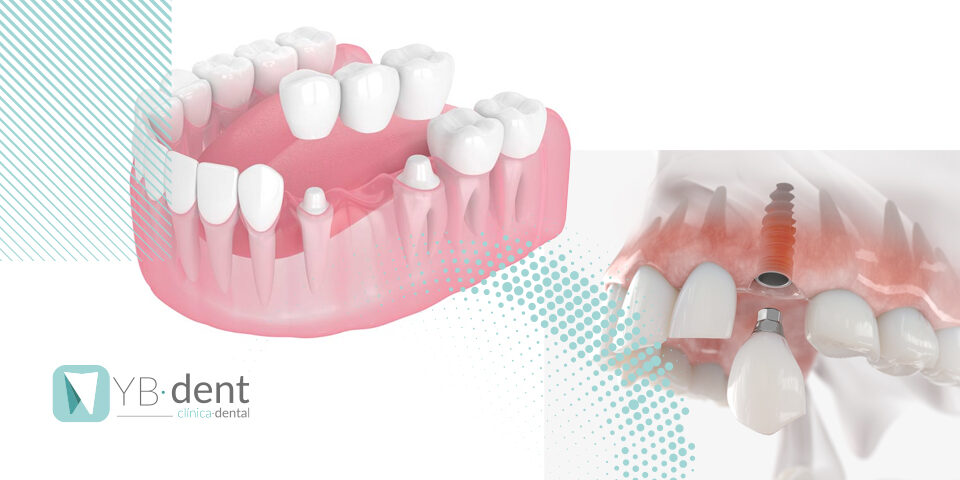Efectos del ácido hialurónico en la piel

El ácido hialurónico es una sustancia natural que forma parte del colágeno que está presente en nuestra piel, es decir que forma parte de nuestro organismo. Una de sus principales funciones es mantener nuestra piel hidratada, pero con el paso del tiempo, los niveles de ácido presente en el cuerpo van disminuyendo dando paso a las arrugas.
Cabe destacar que no solo se encuentra en las capas más superficiales de la piel, sino también en capas más profundas. Su principal fortaleza es su excelente capacidad para retener el agua. Además, es una sustancia que funciona para mantener su elasticidad y regular su hidratación.
Por lo tanto, desde la Clínica dental en Valencia YB-dent queremos que sepas que es un principio activo muy utilizado para el tratamiento de la sequedad y el envejecimiento de la piel.
Beneficios del ácido hialurónico
Permite una hidratación duradera de la piel, facilitando la retención del agua en dos capas: la epidermis y la dermis. Rellena las arrugas, reduce las arrugas y líneas de expresión ya que crea una estructura de red debajo de la piel. Reafirma la piel, ayuda a restaurar y mantener la firmeza de la piel perdida con los años ya que estimula la producción de colágeno.
El ácido hialurónico hace que la piel sea más tersa y suave. Reduce la pigmentación de la piel, otra gran propiedad es la de reducir la pigmentación evitando así las manchas provocadas por el sol o el paso del tiempo.
Mantiene la piel flexible, el ácido hialurónico se une al agua para mantener la humedad, así se ayuda a mantener la piel sana y elástica. Otro de sus beneficios es que mantiene la humedad de los ojos, así favorece el intercambio de nutrientes. Trabaja como lubricante para mantener una vista sana, especialmente si nos sometemos a alguna cirugía.
Un procedimiento estético del ácido es su aplicación en los labios, proporcionando un aumento de los labios eficiente y duradero a la par que tolerado por el cuerpo.
También este suplemento, proporciona resistencia a los ligamentos para que nuestras encías puedan aguantar bien la boca. También hidrata el tejido para que la fijación de los dientes al hueso sea más fuerte.
Los productos con esta sustancia hidratan el cabello e incluso mejoran su densidad, en definitiva, hidrata el pelo maltratado. El ácido hialurónico no solo protege y fortalece los huesos de la boca sino que aumenta toda la resistencia ósea.
Es muy útil para las articulaciones, permite moverlas sin sufrir lesiones o dolores. Podemos recurrir a suplementos para aumentar el nivel de ácido hialurónico en algunas partes del cuerpo.
Por último también decir que el ácido hialurónico contribuye a la cicatrización de las heridas y se ha demostrado que los extractos de esta, son productos seguros y eficaces pudiéndose utilizar en la reparación de la piel.
Efectos secundarios del ácido hialurónico
Los efectos secundarios del ácido hialurónico en la piel son muy poco frecuentes, ya sea como esté aplicado sobre el organismo. No es recomendable usar ácido hialurónico en personas que tienen alergias, mujeres embarazadas o periodo de latencia y en zonas en las que la piel esté inflamada. En caso de tener algún efecto secundario sería:
- Reacción alérgica de irritación o enrojecimiento de la zona
- Sensibilidad, hinchazón o dolor en la piel
- Aparición de algún hematoma después de las inyecciones
¿Dónde se puede encontrar?
Podemos encontrar ácido hialurónico en diferentes sitios y estados dependiendo del tratamiento que se vaya a realizar. Se puede comprar en farmacias o tiendas especializadas en belleza o centros estéticos donde se venden en forma de inyecciones.
Se puede comprar en cremas o gotas, estas son especialmente para hidratar la piel y reducir las arrugas. Existen comprimidos de ácido hialurónico que son indicados para regenerar cartílagos o para postoperaciones.
Existe ácido hialurónico en formato inyecciones, usadas normalmente para rellenar arrugas y cicatrices o también para reducir las ojeras, también se utilizan estas inyecciones en medicina para calmar dolores o inflamación en articulaciones.



